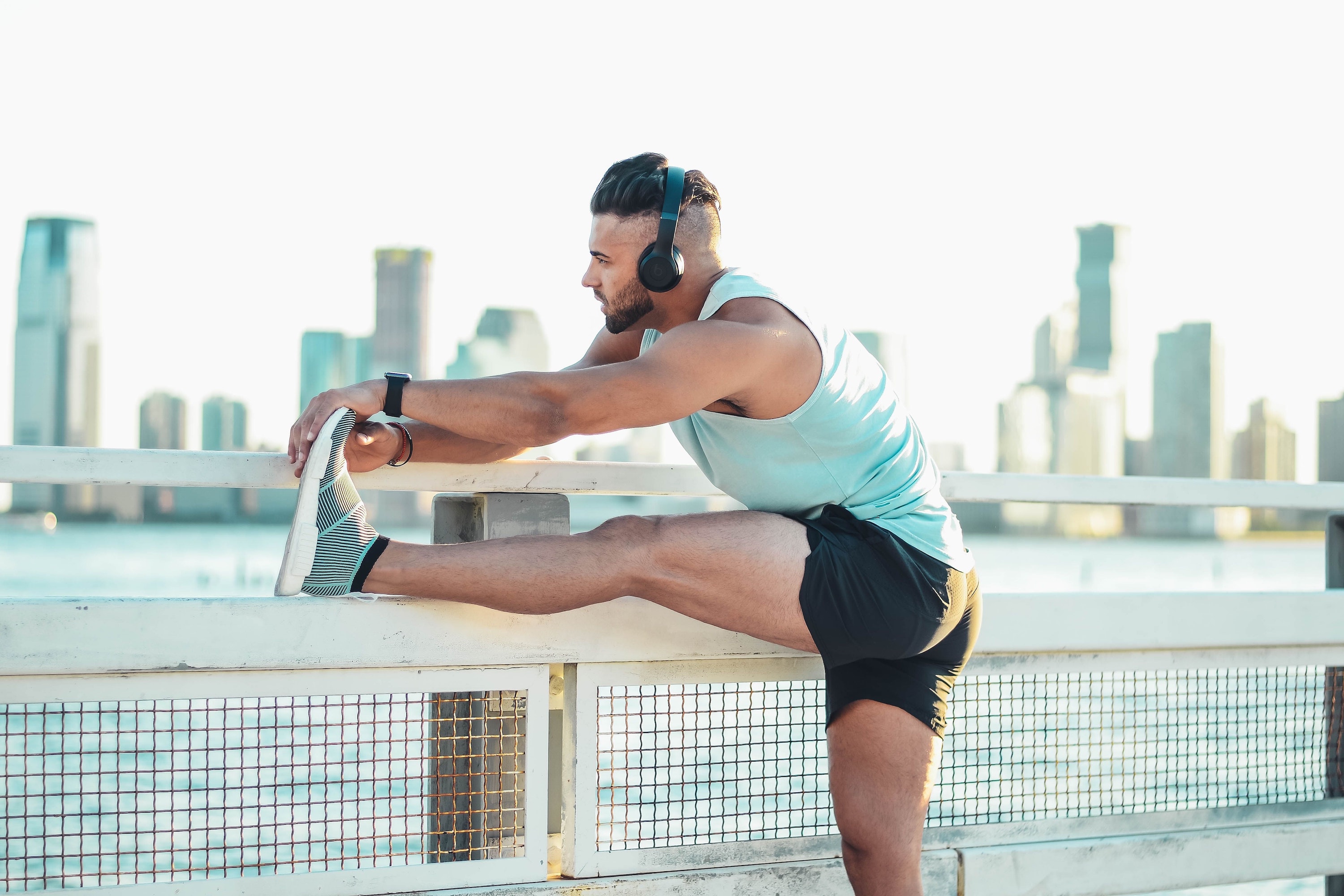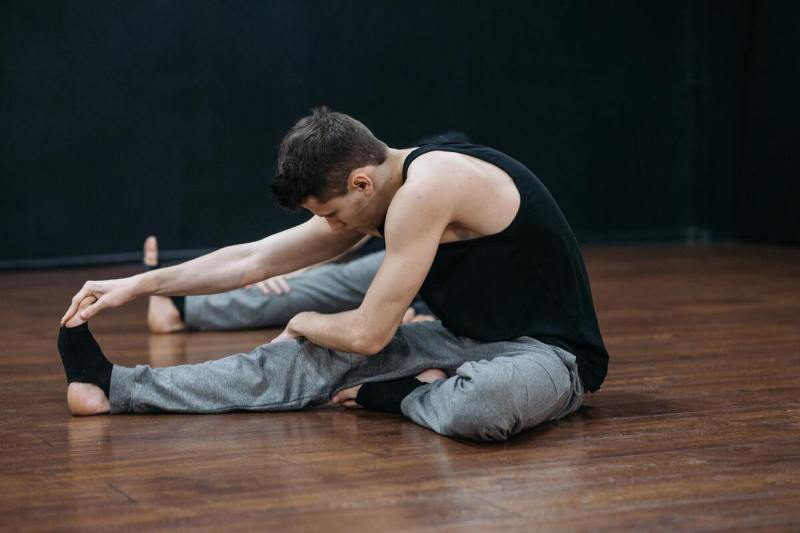
Dumbbell hamstring exercises isolate and challenge your hamstrings, leading to impressive muscle gains and overall lower-body strength. This makes them an effective but sustainable exercise routine for building and training your hamstrings.
Dumbbells have a variety of benefits over traditional bodyweight exercises. Most significantly, they allow for progressive overload as you can improve with increasing sets, reps, and more challenging styles.
However, it is not out of place to wonder what dumbbell hamstring exercises can strengthen and build your hamstrings, which is what this article centers on. So, it is time to dive in.

The importance of strong hamstrings
The hamstrings are three large muscles at the back of the thigh. These muscles help control the hips and knees during movement, so you need your hamstrings to perform basic lower-body movements like walking, running, climbing, and squatting.
These basic movements the hamstrings perform also help in athletic activities. For example, they help to slow down hip flexion and knee extension during high-velocity activities.
Besides, issues such as hamstring tears or strain while running and knee injuries during sports are common. This can occur due to having weak or unbalanced hamstrings.
Therefore, weak hamstrings mean weak, slow, or painful movements, and strong hamstrings give firm, balanced, and fast movements. So, having well-built hamstrings is crucial.

Can you get strong hamstrings with only dumbbells?
You can get strong hamstrings with only dumbbells, depending on the exercise. In addition, effective hamstring exercises with dumbbells stress the hamstring muscles from all angles to build them.
This implies that each exercise targets at least one of the major functions of the hamstring muscles, which are hip extension and flexion, knee extension and flexion, and hip or knee extension and rotation
If the exercise emphasizes at least one of these and you do it with the proper technique, then you need to be consistent to see results.

5 dumbbell hamstring exercises for gains
Dumbbell hamstring curls
The dumbbell hamstring curl is a lower-body exercise that focuses on increasing the flexibility and strength of the hamstring muscles. If done in the proper form, it can improve the overall strength of the leg.
This hamstring workout reduces the risk of knee injury, enhances muscle growth, and improves mobility. It can be done isolated with a machine or by adding dumbbells.
Instructions:
- Lay face down on the floor and position a dumbbell vertically in between your feet.
- Brace your core and bend your knees to slowly bring the dumbbell up off the floor.
- Pause when your knees form a 90-degree angle, and then slowly bring the dumbbell back to the starting position.
- Repeat for 3 sets of 12 to 15 reps.
Straight-leg deadlifts
This is a variation of deadlifts that targets the hamstring muscles. It entails a hip hinge movement that is specific to these muscles.
Moreover, it is one of the best hamstring exercises with dumbbells to add to your leg workout or full-body workout day.
Instructions:
- Stand tall with your feet hip-width apart and a dumbbell in each hand.
- Keep your legs straight with only a slight bend in the knee as you push your glutes back and start to hinge forward. You want to hold your dumbbells in front of your legs with your palms facing you.
- Pause when your back is parallel to the floor, and you feel a stretch in your hamstrings.
- Use your hamstrings to bring yourself back to standing.
- Repeat for 3 sets of 10 to 12 reps.
Single-leg Romanian deadlifts
Single-leg Romanian deadlifts are a lower-body exercise that entails training the posterior compartment of your thigh. They are similar to straight-leg deadlifts but allow you to isolate each hamstring.
Instructions:
- Stand tall with your back straight.
- Root one of your feet firmly on the ground from the toes to the heel. Hold a dumbbell in your hand on that same side.
- Hinge your hips and lean forward. Let your other foot come off the floor, and that leg go behind you.
- As you lift your foot, incline your torso forward and keep your spine straight till your torso is parallel to the floor. The dumbbell should be mid-shin at this point.
- Exhale and press your other foot deeper into the ground as you bring the raised foot back down and come to standing.
- Repeat for 3 sets of 8 to 10 reps on each leg.
Dumbbell good mornings
Dumbbell good mornings are one of the hamstring workouts you can adopt progressive overload with. This exercise entails hinging at your hips and rising to wake up the posterior chain muscles.
Instructions:
- Stand with your knees slightly bent and feet shoulder-width apart.
- With your palm facing forward, hold two dumbbells at shoulder level.
- Still with your knees slightly bent, hinge at your hips as you push your glutes back and lower your torso until it is almost parallel to the floor. You should feel a nice stretch in your hamstrings. Keep your gaze forward throughout this movement.
- Pause for a few seconds, and then use your hamstring and core strength to return to the starting position.
- Repeat for 3 sets of 10 to 12 reps.
Reverse lunges
Reverse lunges are one of the best hamstring exercises. They build the hamstring muscles, develop leg strength, and improve stability and athleticism. Reverse lunges are valuable for people with aching knees.
Instructions:
- Stand with your core muscles engaged and your feet hip-width apart
- Hold a dumbbell in each hand by your sides, and maintain a straight back with your chest up.
- Step one foot back and bend your knees until they reach 90-degree angles.
- Pause here for a moment before pushing through the balls of your back foot to bring it back to the starting position.
- Repeat for 3 sets of 10 reps on each side.

Tips to maximize building your hamstrings
Building strong and balanced hamstrings will aid effective lower body movements. Therefore, the following can help you maximize building your hamstrings:
- Prioritize compound exercises that will target several muscle groups to see satisfactory results.
- Balance compound exercises with other exercises that isolate the hamstring muscles and work on them specifically.
- Ensure you work slowly and in a controlled manner using the proper techniques to prioritize progressive overload.
- Do not choose heavier weights over proper form since this will cause injuries, tears, and pains with little to no result.
- Allow your hamstring muscles to rest and recover properly — don’t train them two days in a row.
Editors' Recommendations
- Working out on keto: Maximize your fitness plan with this handy guide
- How to do a goblet squat: Your complete guide
- Pilates is about more than just your core — try this full-body Pilates workout
- Are you doing hammer curls the right way? Your complete guide
- 7 exercises that target the deep core (and what that actually means)



